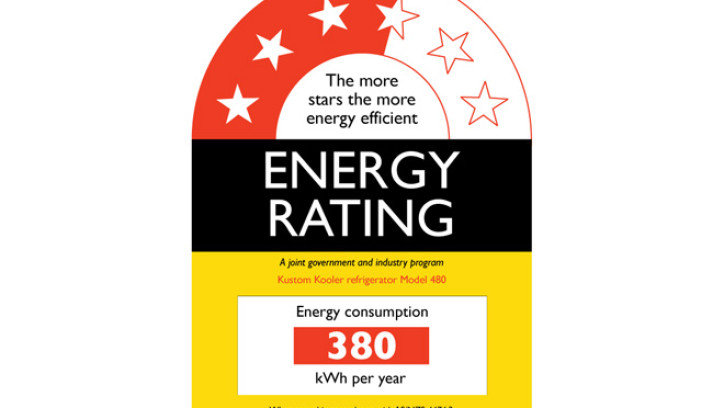Choosing energy efficient appliances
Last updated: 9 August 2023

Many home appliances are energy guzzlers, so check the energy rating label before you buy.
Saving energy, water and money
Some appliances use energy even when you're not using them – drawing power even when on 'standby'. Others use a great deal more than they should because they don't use energy efficiently.
By choosing carefully, you can save energy and water. Key things to consider are:
- whether you really need the appliance
- what the right-sized model is for your household
- how much energy and water it will use.
You can also save, without inconveniencing yourself, by using appliances wisely (for example, by not putting hot food in your fridge as this means the fridge has to work harder).
Do you really need another appliance?
Some appliances are expensive ways of doing jobs that can be done quite easily in other ways or, through renovation, can be eliminated. For example:
- in-sink waste disposal units use water and electrical energy, and add to the load on the local sewage treatment plant. A smarter option is to collect food scraps and compost them
- dehumidifiers cost up to 40c for every litre of water they remove from your home. You might be able to eliminate this job by installing proper ventilation, insulation and heating.
However, if your appliance is old you may be better off getting a newer model that is energy and water efficient. For example, a modern fridge will use around half the electricity of a 20-year-old fridge, meaning you'll quickly make up for the cost of buying it.
Energy efficiency ratings
If you are buying an appliance, look for one of the labels that indicate an appliance's energy efficiency. The Energy Rating label is compulsory on some products.
Energy Rating labels
If you are looking for new or second-hand appliances, an Energy Rating label provides a quick check of an appliance’s energy efficiency.
Energy Rating is a collaboration between the New Zealand and Australian governments to help people reduce their energy use and carbon emissions. The added benefit is that any reduction will also reduce your electricity bill.
The following appliances when being sold new must have an Energy Rating label:
- fridges
- freezers
- washing machines and dryers
- dishwashers
- televisions
- heat pumps/air conditioners (single phase, non-ducted)
- computer monitors.
To meet the requirement, they must display an Energy Rating label showing:
- a 'star' rating of the appliance's energy efficiency – six stars means the appliance is highly efficient, one star means it is not
- how much energy the appliance uses in a year.
See a full list and compare energy ratings for different appliances on the Gen Less website.
An appliance that uses 500kWh of energy a year will cost you about $130 a year to run (based on energy costs of 26c per kilowatt hour).
A model that is initially more expensive may be more efficient and save you hundreds of dollars over its lifetime. The cost difference between two appliances might not be that big but the ongoing power bill savings from an energy efficient model could be considerable.
Bear in mind that a larger model will use more energy than a smaller one with the same number of stars – so check the annual predicted energy use as well as the star rating.
Efficient appliance calculator
The Efficient appliance calculator allows you to find out how the energy rating affects the amount of energy used for a large range of household appliances, and how much each appliance will cost per year to run.